Top 7 Most Beautiful Historical Sites in Tajikistan
Tajikistan is the smallest country in Central Asia and yet it is still almost five times the size of Belgium. It is known for being the land of the high Pamir ... read more...Mountains. Around half of its land lies at 3000 meters above sea level or more. But don’t worry if you cannot travel for a couple of weeks at a high altitude. You can still enjoy nature at its beautiful best in places like the Fann Mountains. In fact, the altitude in Tajikistan varies from 300 to 7495 meters above sea level and offers various opportunities to tour the country. So here are picks of what are the most beautiful historical sites in Tajikistan to see in there.
-
Hisor Fort is one of the most beautiful historical sites in Tajikistan, located along the Khanaka River in Hisor Valley. The structure has undergone numerous reconstructions, repairs, and expansions. Hisor has a fort dating back to 1000 BC, according to historical archives. The fort's most recent records date from the time when Cyrus the Great established the Persian Empire (around 550 BC). Unfortunately, hardly much of the old fort has survived the test of time. Different buildings were erected in different eras, making it difficult to date the modern fort. A wedding ceremony building was recently constructed inside the fortification. The arched gate, which dates from roughly the year, is the oldest remaining section of Hisor Fort.
The construction of Chasmai Mohiyon Mosque began around 700, about the same time as the construction of Sangin Mosque, although it was not completed for nearly 1,000 years. The four bottomless jugs placed beneath the dome's walls to increase the hall's acoustics are a notable feature of Sangin Mosque. Several components of the fort were built in the 1500s, including the main gate wall, the Old Madrassa, the Makhdumi A'zam Mausoleum, and various improvements to the Old Mosque. A caravanserai, built in 1808 as a safe haven for Silk Road traders and their camels, is one of the most recent constructions nearby to the fort. Only the lower part of the caravanserai remains, as the top layer was taken by the Soviets to build a theater in Dushanbe.
The majority of the buildings have been refurbished. A museum exhibiting relics from Tajikistan's rural past and Soviet souvenirs is housed in the Old Madrassa. On the other side of the road, there are several old horse stables. Hisor is located approximately 16 miles west of Dushanbe. There is lots of public transportation to get there, but finding the correct bus stop downtown Dushanbe is difficult. Taxis are the quickest and easiest way to get to Hisor, and depending on your haggling skills, they can be inexpensive. If you go to Hisor Fort on a Sunday, you're almost certain to run into a wedding or three.
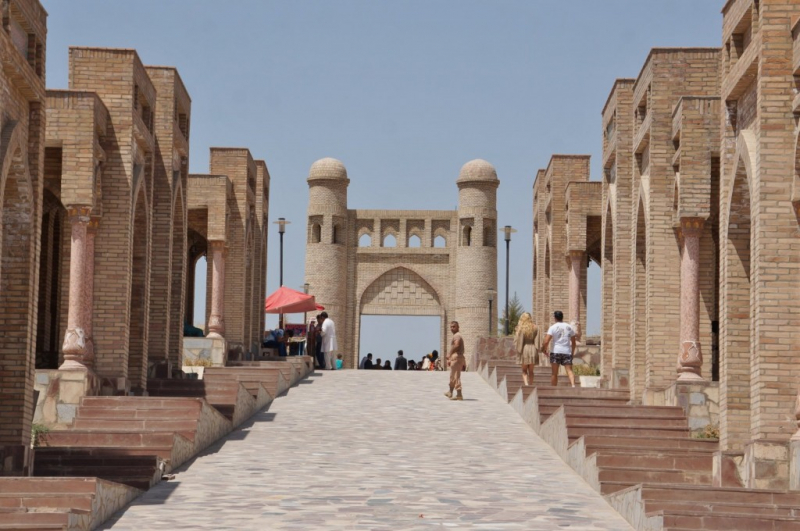
Gody.vn 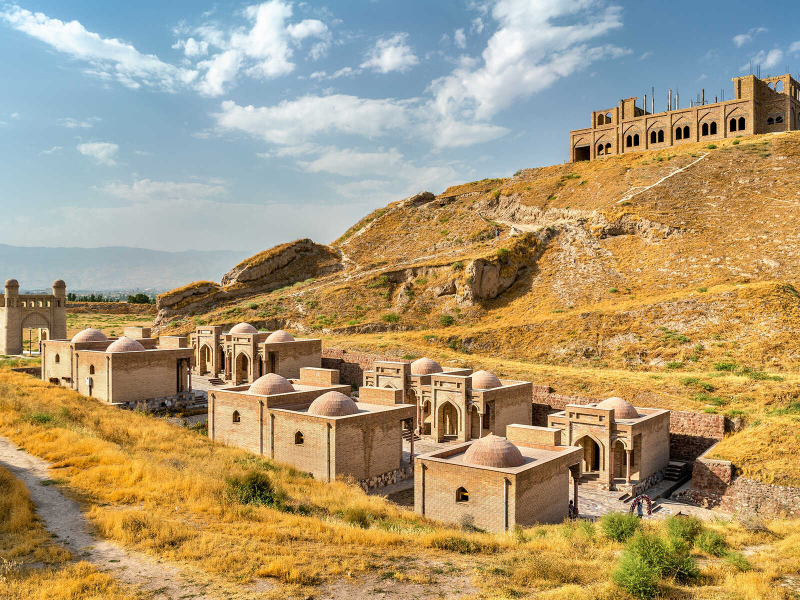
Must see -
An archaeological site on the border with Uzbekistan is located in Sarazm, the Proto-urban site of Sarazm, a historic city in Tajikistan's northwestern region. From the 4th century B.C. to the end of the 3rd century B.C., it bears witness to the growth of human settlements in Central Asia. Sarazm proto-urban site is an archaeological site in Central Asia that documents the evolution of communities from the 4th millennium BCE to the late 3rd millennium BCE. Sarazm's Proto-urban Site exemplifies the region's early proto-urbanization as evidenced by the sophistication of the homes, infrastructures, and archaeological finds.
It arose from the complementarity that existed between pastoralism and early agrarianism, and later between the exploitation of mineral resources and the development of handicrafts in the Bronze Age. Sarazm indicates the existence of cross-regional trade and cultural exchanges across Central Asia over large distances. This was a long-lived and rich proto-urban metropolis located at the far north-eastern tip of a large region that stretched from Mesopotamia to the Indus and the Iranian plateau.
"Where the land begins" is what "Sarazm" means. Sarazm's Protourban Site was listed on the UNESCO World Heritage List in 2010. Many domestic objects, such as axes, farm implements, containers, and agricultural products, such as wheat and barley seeds, were discovered. The purpose of these relics is to show how farming was done in the past. Houses were also dug up. Some were built with bricks, while others were just packed with mud. The majority of the dwellings are multiroomed, allowing visitors to get a sense of the old city's vastness. Aside from dwellings, ceramics can be found in the city's ancient tombs. You can tell how prosperous the city used to be from the abundant grave goods.
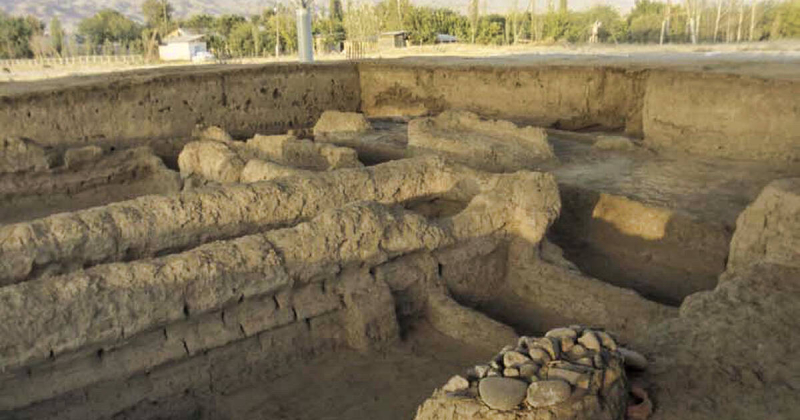
UNESCO 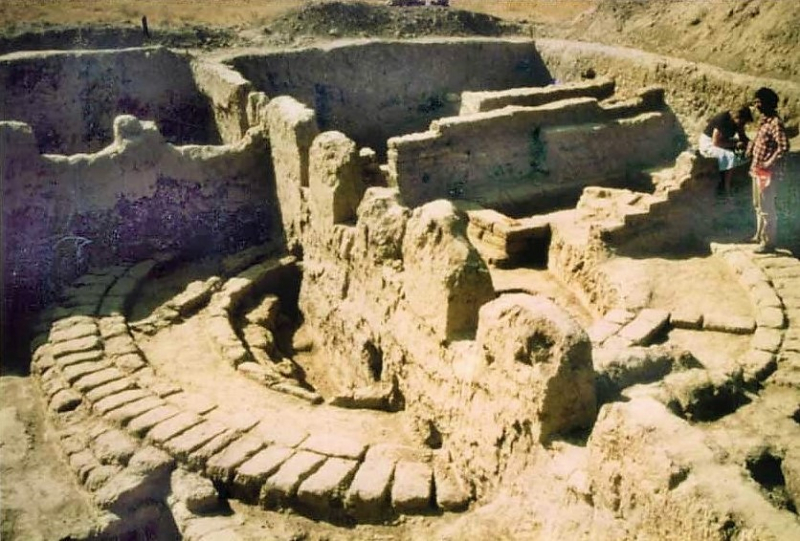
Tajik Cultural Online -
Every Islamic country has a magnificent mosque that serves as the spiritual heart of the community. Until the current erection of the Tajikistan Mosque, the Haji Yaqub Mosque, which is the principal mosque in the capital city and one of the most beautiful historical sites in Tajikistan, was the country's largest. The mosque, which can hold up to 3,000 people, was built over 200 years ago. It was named after Haji Yaqub, a notable Tajik commander and religious leader who fought a battle with Qing Dynasty General Zuo Zongtang to honor his valor and contributions to territory gains.
Because Tajiks are descended from Persia, the Haji Yaqub Mosque is built in the Persian style and is as colorful as its Iranian counterparts. It boasts a colossal arch. A massive chandelier hangs from the roof of the prayer hall, beneath the dome, with intricately carved designs. The patterns painted on the mosque's external and internal walls, as well as the Persian columns and the Russian palace plan, give it a distinct beauty.
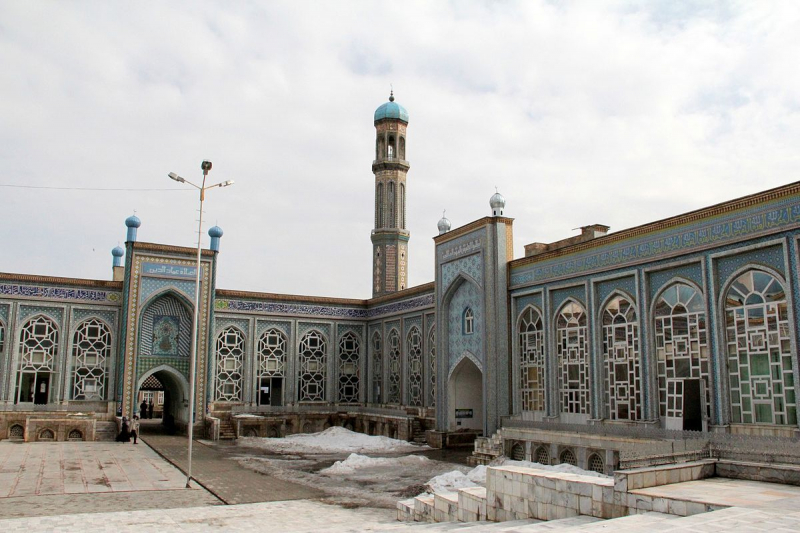
Wikipedia 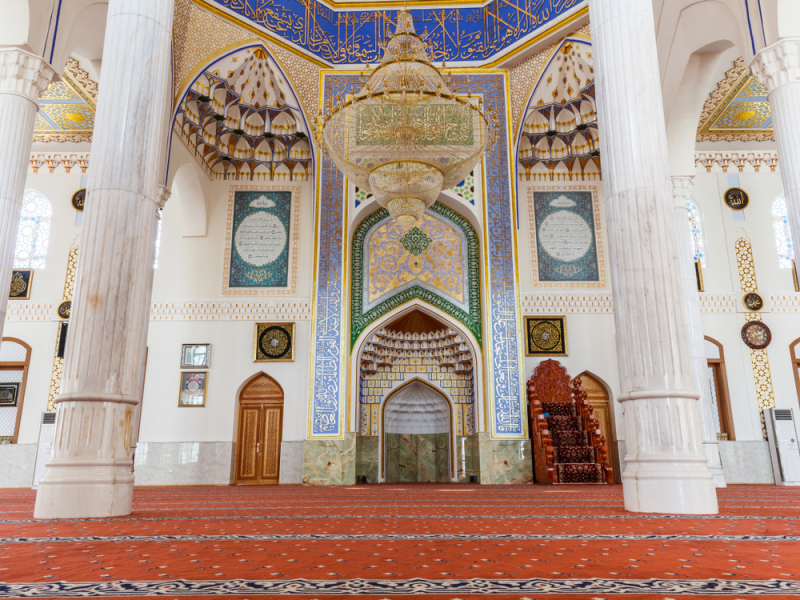
TravelHK -
In the VI-V centuries BC, Khujand Fortress was built. According to the findings of the North Tajik archaeological complex expedition, Khujand Fortress was originally enclosed by an embankment and then by a raw material wall of significant thickness. Separate fortress walls surrounded the city and citadel components of ancient Khujand, which were separated by a vast and deep watery moat.
The ruins of these defenses were discovered beneath the central part of the left bank of Khujand and encircle the ancient city's 20-hectare territory. A new fortress was built in the VI-VII centuries. The citadel, Shahristan, and Rabid were the three principal components of medieval Khujand. At the gates of Rabad, the citadel was situated on the banks of the Syr Darya. The medieval Khujand Fortress was regarded as one of Central Asia's most fortified.
During Genghis Khan's siege of the city, 25 thousand warriors and 50 thousand Central Asian prisoners were dispatched. One of the greatest chapters in the history of the Tajik people's freedom movement is Timurmalik's courageous defense of the Khujand Fortress and the neighboring island on the Syr Darya. The castle of Khujand was destroyed as a result of the Mongol invasion. According to the historian Hofiz, the fortress was in ruins at the start of the fifteenth century. According to Zahiriddin Babur, the stronghold was renovated at the end of the 15th century and served as the residence of the local king.
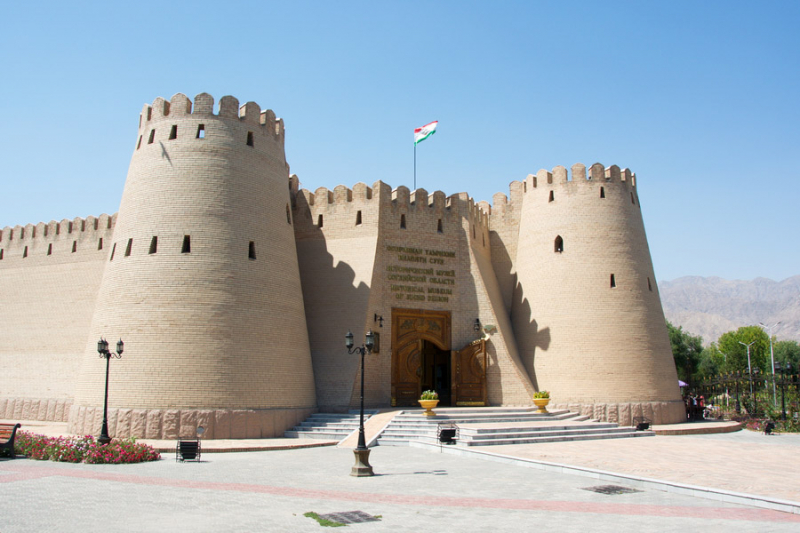
Advantour 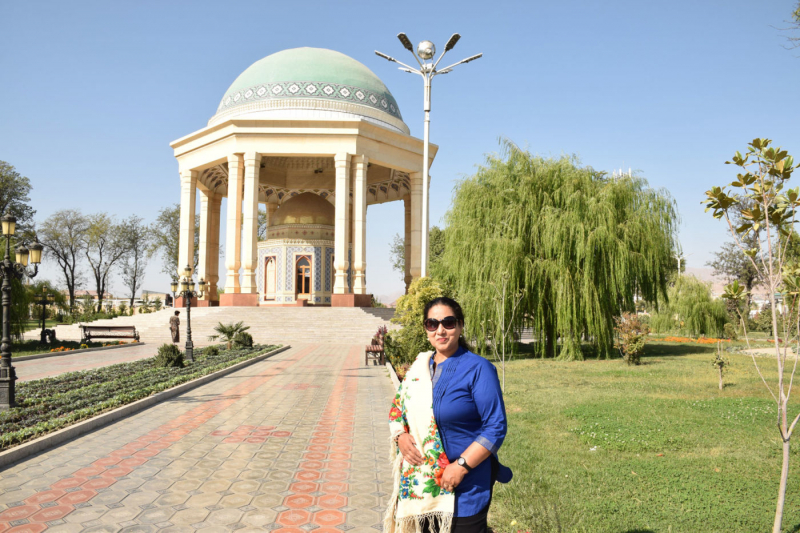
BombayMumbai -
The Statue of Ismoil Sormoni to be Tajikistan's national hero, and his tomb has become one of the most beautiful historical sites in Tajikistan. The statue of this ancient ruler can be found in most of the county's major towns and cities. However, this Dushanbe colossus, located in Dusti Square in the city's core, is one of the most memorable. Its design has an artdeco feel to it, with bursts of gold against a darker background. Ismoil Somoni's actual figure stands 13 meters tall, but his surrounding arch expands the statue's entire height to an astonishing 43 meters, adding to its formidable aspect. If the monument weren't already grand enough, it is all topped off by a golden crown said to be made of pure Tajik gold.
Ismoil Somoni holds a scepter in his right hand with seven stars, which are also found on Tajikistan's flag. These seven stars are intended to represent the seven traditional stars that can be found over seven mountains, which in turn may be found above the seven orchards in heaven, which are frequently mentioned in Tajik mythology and storytelling. A raised tiled map of the Samanid Empire, which displays the extent of this once-mighty Empire, can be found behind the monument. It spanned numerous Central Asian countries, including Afghanistan, Pakistan, and much of Iran, with its capital in Bukhara.
A clock monument, the majestic National Library, and the Independence monument, all of which are close to the memorial, are among the neighboring attractions. Ismail Samani's statue does not have an opening or closing hour, and visitors are welcome to visit at any time. The figure glows brightly at night, making it ideal for photography. During the day, though, images with the snow-capped mountains as a backdrop appear much better. Climbing a series of steps leads to the statue, which is guarded by a couple of surly-looking police officers at the top. Perhaps they are concerned that someone will reach the monument's gilded crown!
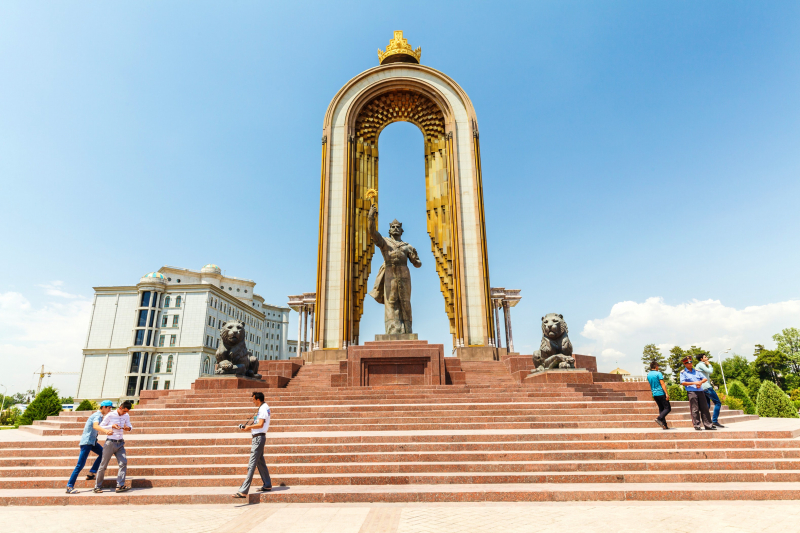
DepositPhoto 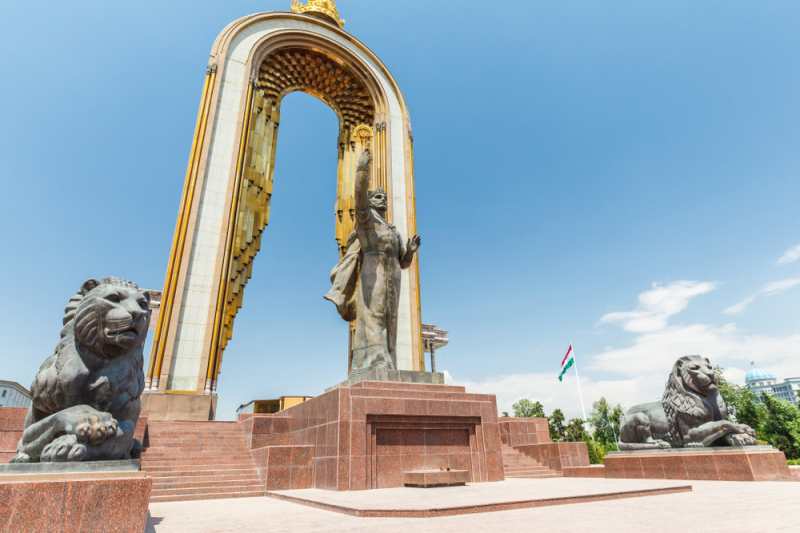
TravelHK -
The Mausoleum of Sheik Muslihiddin was built over the burial of the spiritual Sufi leader Sheik Muslihiddin, who lived in the 8th–9th century and was well-known in the region. It was a tiny mosque built near the holy burial, a spiritually significant location that was later expanded. A wonderfully ornamented entrance was created in the 14th century, which was one of the major construction phases. It features magnificent Islamic themes and inscriptions, as well as non-glazed and polychrome glazed carved terracotta, as well as many varieties of majolica and its incrustations into terracotta. It depicts the early stages of the transition from monochrome to polychrome decoration and is a rare or unique specimen in Central Asia.
The doorway design is inspired by the building's painted clay mihrab niche, which is a rare or unique preserved example in the region. The building's state is stable for the time being, according to the most recent technical evaluation, although it is overall inadequate, despite the lack of cracks and other visible deterioration. Restoration work done in the 1980s with non-authentic materials including concrete and bitumen, insufficient water insulation, and damp reduction caused a slew of issues with the structure.
Water and salts flowing and excreting have a significant impact on original brickwork. Despite annual upkeep, there are numerous indicators of recent plaster falls, new leaks, and condensation spots. The building's constant excessive humidity is unsuitable for its wooden and clay artifacts, paintings, and visitors. Emergency repairs should be completed as soon as feasible, eliminating restoration errors and halting the degradation of the monument.
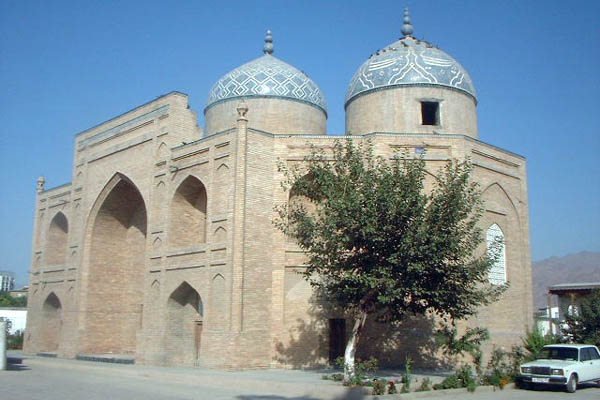
tabisite.com 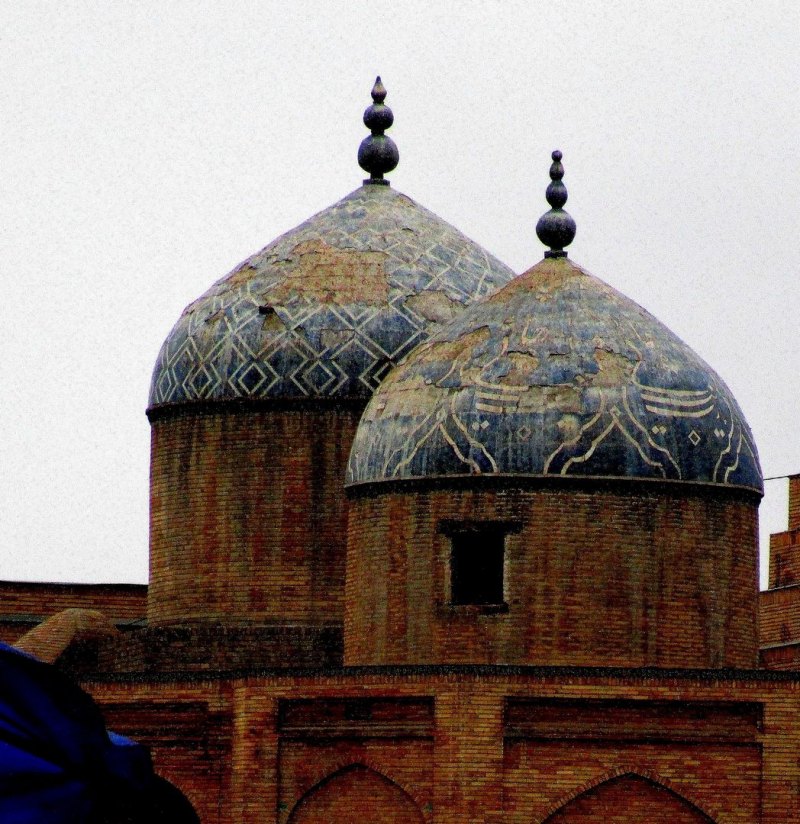
IRCICA -
The Khazrati-Bobo architectural complex is located near Pendzhikent, within the Sogd area's boundaries. As a result, the complex is also known as the Khazrati Chorku Mausoleum, which is considered one of the most beautiful historical sites in Tajikistan. Various structures and cult structures make up the compound. Despite the fact that they were constructed at various dates, they all have one thing in common: they all face north. The mausoleum of a specific holy figure, whose name varies according to locals: "Khast-i-Podsokh," "Khast-i-Amir," and "Amir Hamza Sokhibkiron," for example.
According to local mythology, Saint Khazrati-Bobo, the great hero, leader, and king of Amir Hamza Sohibkiron was buried in the mausoleum in just one night. The complete complex, which comprises two types of structures, is considered a one-of-a-kind medieval architectural monument. The wooden mausoleum, with its avian resting on carved columns embellished with Kufi inscriptions and decorative carvings, is the oldest construction from the 10th to the 12th century. This edifice is supported by seven carved wooden columns.
The second type of Khazrati-Bobo construction is from a later time period. The four-columned aivan in the room dates from the 18th to 19th centuries. The walls and ceiling are likewise painted and embellished. This location was reportedly meant for pilgrims who wanted to stay the night. Some rites, such as khudoi, were also performed with it. A wooden minaret in the shape of a three-tiered tower stands in the complex's yard. A pise-walled fence surrounds the entire building complex. According to the oldest residents of the area, the Mazar yard was once a graveyard. However, in the mid-twentieth century, practically all tombs were desecrated after some churchgoers who frequently visited the mosque fell into the graveyard.
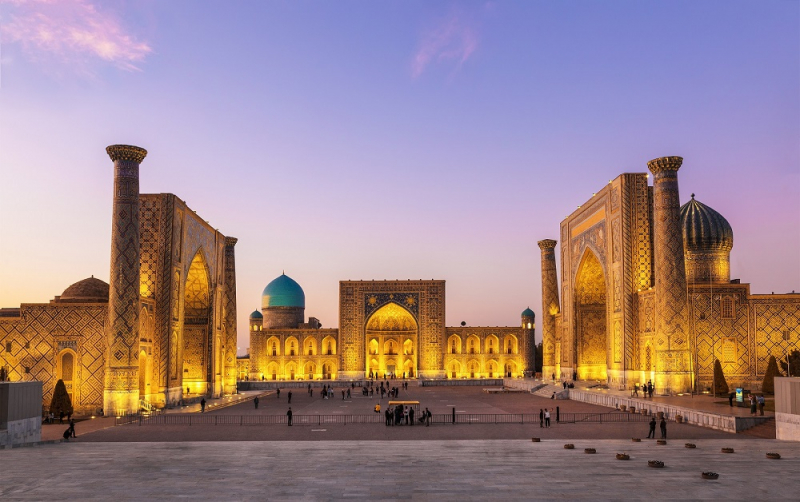
Flickr 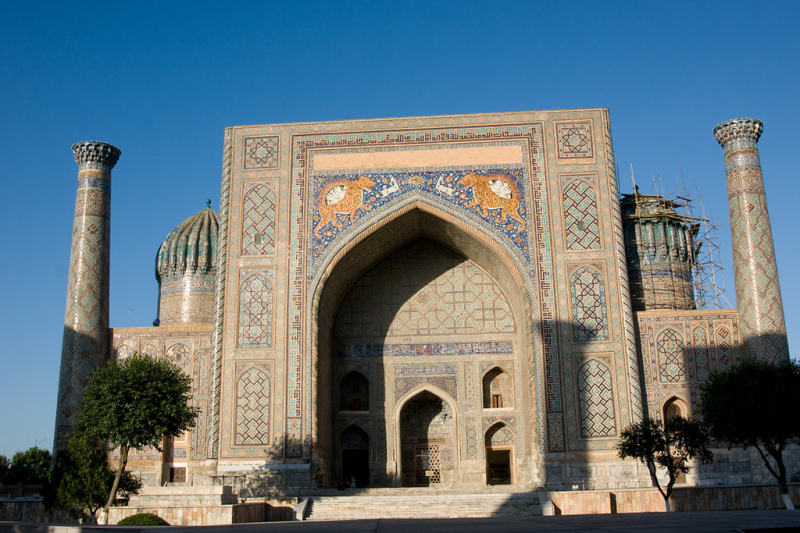
Flickr




























